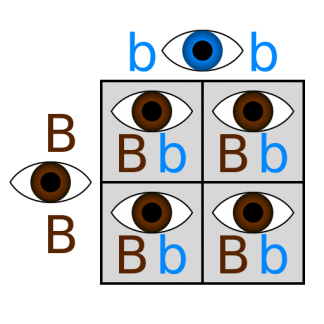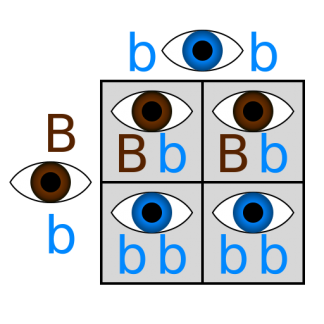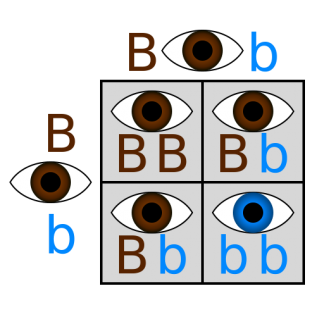A Punnett Square is used to help determine which genes a child of 2 parents will have.
Every person has 2 copies of certain genes (called alleles).
Onsego GED Prep
Pass the GED Test in 2 Months
Learn Just 1 Hour a Day.
It doesn’t matter when you left school.
One of the copies is coming from your mom, and 1 copy is coming from your dad.
Video Transcription
Now, your mom and dad have two copies each, so how can you tell which are the ones that you will receive?
Pass the GED this summer
Studying Just 1 Hour a Day.
It doesn’t matter when you left school.
Often, scientists use letters when they look at genes. Let take a look at eye color. We call the alleles B or b (each allele is a different one, but both alleles belong to the same gene).
If the two copies you have are B & B (we write it as BB), you’ll have brown eyes. In case you have b & b (we write bb), you’ll have blue eyes.
When you’re having a mix of these two alleles (Bb), you’ll have brown eyes (because B is the dominant allele and b is the recessive one). We may go over that aspect later if you wish.
Now, let’s say that your mom’s having brown eyes (BB) and that your dad’s having blue eyes (bb). So, what color might your eyes be?
We may draw a Punnett Square, actually merely a box with 4 tiles. Then we put both alleles for your dad (b & b) at the top and both alleles for your mom (B & B) on the left side.
Then, for all four tiles, we look at the letters at the top and at the side and combine these. Now, that will look like this:

So you see, you will have brown eyes! Now, what if your mom has brown eyes while she has Bb? Then, it will look like this:

So then you might have either brown or blue eyes.
Now, since this Punnett Square consists of four squares and two of these are blue, and two of these are brown, it means that you have a fifty percent chance of having brown or blue eyes.
Now, what will the chance that you have blue eyes in case just one square is blue? What type of alleles do your parents have in order to make just 1 blue square?

Well, in this case, both your parents might have brown eyes whereas you still have a 25 percent chance to get blue eyes!
In conclusion: A Punnett Square helps determine what genes a child of two parents has. All individuals have two copies of certain genes, referred to as alleles.
One copy comes from your mom, and one copy comes from your daddy. Well, your mom and daddy have both two copies, so how do you know which ones you’ll get? That’s what this lesson is all about.
Last Updated on July 15, 2025.